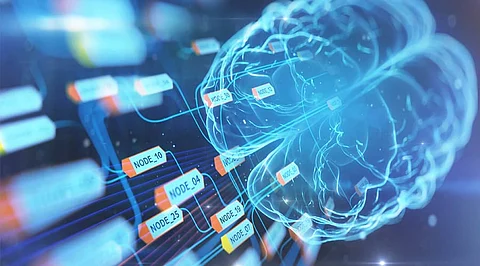

Advanced machines never fail to leave men in awe. But only researchers who worked behind the machines know how much time, cost and data it took to become a stage stealer. Training an algorithm that employs various features in a machine is quite nerve-wracking. But tech geeks have found a solution using transfer learning. Besides, companies are also unveiling a mixture of technologies like deep learning neural networks and machine learning to come up with futuristic machines.
We are often surrounded by the myth that number-crunching gets cheaper all the time. According to Moore's law, the number of components that can be squeezed onto a microchip of a given size can double every two years with the amount of computational power available at a given cost. This idea might suggest the opinion that the cost of training a machine is falling. But that is not true. Just because data is everywhere and is easily available doesn't mean they are open to use and inexpensive in any way. Even when the data is open for accessibility, training an algorithm takes much more effort than any other computational process. Industry analysts anticipate that worldwide spending on artificial intelligence will reach US$100 billion in 2024, double of what it is today.
The advantage of machine learning and artificial intelligence algorithm is that they can easily understand information, act and interact with our environment in the most natural and human way possible. But the performance of the models depends highly on the calculation power allocated, and the quantity and quality of data. A study conducted by Dimensional Research unravels that around 96% of organizations run into a problem with training data quality and quantity. Besides, the study also claims that most machine learning model projects require more than 100,000 data samples to perform effectively. A machine learning system is still programmed with standard one-and-zero logic, but it can modify its behavior to meet specialized goals based on patterns it discovers in the sample data. Henceforth, machine learning algorithm needs to be trained with good data, which means data is optimized according to the issue you are dealing with. Fortunately, transfer learning can help as it takes knowledge gained from a pre-trained model that was used to solve a specific task and applies it to a different, but a similar problem within the same domain. Additionally, a mixed array of technologies like deep learning neural networks and machine learning are also making the training process less burdening.
Transfer learning is a machine learning method where a model developed for a task is reused as the starting point for a model on a second task. The technology is seen as a popular approach in deep learning where pre-trained models are used as the starting point on computer vision and natural language processing tasks, given the vast compute and time resources required to develop neural network models on these problems and from the huge jumps in a skill that they provide on related problems.
Remarkably, with the help of transfer learning, instead of starting the learning process from scratch, you start from patterns that have been learned when solving a different problem. This way, you leverage previous learning and avoid starting from nothing. Transfer learning is usually expressed through the use of pre-trained models that were trained on a large dataset to solve a problem similar to the one that we want to solve. One of the well-known examples of transfer learning is GPT-3, the largest natural language machine learning model ever built. GPT-3 is a language prediction model where an algorithm structure is designed to take one piece of language and transform it into what it predicts is the most useful following piece of language for the user. Behind the mechanism are machine learning, deep learning and transfer learning technologies that help the model to produce humanlike predictive text.
Other than this, big tech conglomerates like Microsoft, AWS, NVIDIA, IBM, etc. have leveraged the help of transfer learning toolkits to remove the burden of building models from scratch, address the data quality and quantity challenges and expedite production machine learning.
Join our WhatsApp Channel to get the latest news, exclusives and videos on WhatsApp
_____________
Disclaimer: Analytics Insight does not provide financial advice or guidance. Also note that the cryptocurrencies mentioned/listed on the website could potentially be scams, i.e. designed to induce you to invest financial resources that may be lost forever and not be recoverable once investments are made. You are responsible for conducting your own research (DYOR) before making any investments. Read more here.
